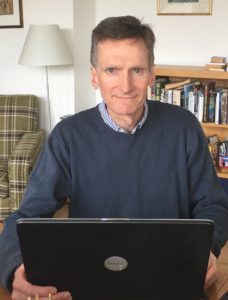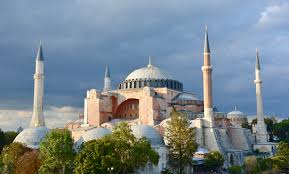16 July 2020
Sacred and Profane
Church, temple, mosque.
By Neil Tidmarsh
 Scores of heavily armed men attacked a compound in Johannesburg in the early hours of last Saturday. At least eight men came over the perimeter wall at 3am and opened fire on the occupants, who fought back. A white van then rammed the main gates, disgorging another sixteen men who added their firepower to the attack. A pitched battle ensued. A hostage situation developed. The police were called, but their efforts were complicated by the fact that some of the gunmen on both sides appeared to be members of the security forces themselves. Five people were shot dead, more than forty people were arrested and thirty-four firearms were seized.
Scores of heavily armed men attacked a compound in Johannesburg in the early hours of last Saturday. At least eight men came over the perimeter wall at 3am and opened fire on the occupants, who fought back. A white van then rammed the main gates, disgorging another sixteen men who added their firepower to the attack. A pitched battle ensued. A hostage situation developed. The police were called, but their efforts were complicated by the fact that some of the gunmen on both sides appeared to be members of the security forces themselves. Five people were shot dead, more than forty people were arrested and thirty-four firearms were seized.
No, this wasn’t gang warfare. The compound wasn’t the headquarters of an organised crime syndicate. The episode wasn’t part of a power-struggle for the control of a wealthy and profitable criminal empire. It was part of a power-struggle for the control of a wealthy and profitable religious empire. The compound was the headquarters of a church – the International Pentecostal Holiness Church – which has three million members and is one of the richest in South Africa. Its leader died in 2016 without nominating a successor, and since then at least three factions have been competing to take his place. They’re fighting it out both in court (over claims that more than £5 million of church funds have gone missing) and out of court (where the struggle has left seventeen people dead so far).
This story was only the most extreme of a surprising number of recent stories about the control of places of worship and the conflicts and controversies involved. It seems to have been a theme running through the news this week. Last Thursday, President Macron controversially decided to follow the advice given by Shaw Sheet a year ago (see Notre Dame’s Easter) and announced that Notre Dame cathedral would be rebuilt exactly as it was before last year’s fire, thus annoying the host of modernist architects whose science-fiction plans have been ready and waiting for selection and approval for some months.
Last Monday, India’s supreme court restored control of a temple in Kerala to the family of the last maharaja of Travancore. The Sri Padmanabhaswamy temple is one of the richest places of worship in the world. It was run by the maharaja, but his death in 1991 triggered a dispute about who should inherit his rights to control the building and its wealth. The dispute rumbled on until 2011, when a vault was opened in the temple and yet more treasure – gold and diamonds and jewellery reportedly worth billions of pounds – was found; at that point the Keralan high court declared that the Keralan state government was itself the owner of the temple. But that ruling was overturned this week, after nearly another decade of legal wrangling, and now the former royal family are back in control of the temple complex and its amassed treasures worth a reputed £16 billion. More chambers and vaults remain to be opened, and only the inevitable rumour that the treasure is guarded by an ancient curse is stopping the maharaja’s descendants from immediately doing a Howard Carter (“wonderful things…”).
But the story which really made the headlines this week was of course last Friday’s verdict of Turkey’s top administrative court, the Council of State, that the conversion of Istanbul’s Hagia Sophia into a museum in 1935 was unlawful. The magnificent Hagia Sophia was originally a Greek Orthodox church, built by the Byzantines in the sixth century as the seat of their religion’s patriarch of Constantinople. It briefly became a Roman Catholic cathedral following the Fourth Crusade (1202-1204), but the Ottomans converted it into a mosque after their conquest of the city in 1453. Almost five centuries later, however, it was turned into a museum as part of the Kemal Ataturk’s drive to remake Turkey into a modern (i.e. secular) state after the collapse of the Ottoman empire.
The Council’s verdict clears the way for the fulfilment of President Erdogan’s ambition to change Hagia Sophia back into a mosque; indeed, he issued a decree reinstating it only hours after the verdict was announced, handing control of the site over to the Diyanet, the powerful state body in charge of religious affairs. It has closed as a museum and will reopen as a mosque on July 24.
The move has alarmed religious bodies around the world. “I am deeply pained” Pope Francis said to pilgrims at the Vatican. The World Council of Churches (representing Protestant, Orthodox and Anglican churches) wrote to Mr Erdogan to express its “grief and dismay” at the possibility that Hagia Sophia might no longer be “a place of openness, encounter and inspiration”. Bishop Hilarion of the Russian Orthodox Church called it “a blow to global Christianity”. The leader of the Orthodox Church, Patriarch Bartholomew I, went as far as to claim that it would “turn millions of Christians against Islam”.
It isn’t just a religious issue. It has also alarmed heritage bodies. Hagia Sophia is a UNESCO heritage site; its combination of architectural and artistic riches of different cultures and religions at their most accomplished attracts 3.7 million visitors a year. There’s particular concern about the Byzantine mosaics and frescoes which were covered over in the fifteenth century, uncovered in the twentieth century, and might once more be put out of sight in this twenty-first century.
Most notably, the governments of the USA, France, Greece and Russia have criticised the move. And this suggests that the issue is more than just a religious one, that in fact it is not primarily a religious issue at all but a political one. After all, there are more or less similar precedents to be found in our own religion, in our own country’s places of worship. Our Anglican churches were all Roman Catholic churches until the Reformation of five centuries ago, when the colourful and figurative religious art decorating them was removed or destroyed or covered in whitewash. And a thousand years before that, many of those Roman Catholic churches themselves had been built on top of the places of worship of the older religions they displaced. Further afield, in Spain, Sevilla cathedral was originally a mosque, and the mosque in Cordoba was Christianised in the sixteenth century. All of which makes the fuss about a mosque displacing a church, in an Islamic country, seem rather puzzling – unless it’s seen primarily as a question of politics rather than religion.
Even before Erdogan’s announcement about Hagia Sophia, Turkey’s allies in Europe and America (Turkey is after all a member of Nato) were concerned about his AKP party’s and government’s embrace of a populist and religious nationalism, and the erosion of civil and political liberties, the attack on secular liberalism and the growth of authoritarianism which seem to go hand in hand with it. The restoration of Hagia Sophia as a mosque is widely seen by both his political enemies and his political friends as a triumph for Erdogan as the champion of his nation and its religion. Without doubting the sincerity of the president’s religious convictions, Hagia Sophia’s de-secularisation is sure to rally and strengthen support among the largely conservative and religious voters in his country’s rural hinterland, to off-set the recent electoral humiliations inflicted by the more liberal and secular urban voters. It’s sure to bolster support for him at a time when the country is in dire straits economically and is involved in at least two messy and complicated wars and has recently experienced a traumatic coup attempt and a bloody internal insurrection. And few commentators think that it’s simply a lucky coincidence.
Many claim that Erdogan sees himself as a latter-day Ottoman emperor, keen to restore his country’s imperial power and glory; an ambition which concerns Turkey’s allies, worries its neighbours and threatens its regional rivals. The mosque project at Hagia Sophia – the icon of Ottoman magnificence – can be seen as a symbolic (and more than symbolic) step towards the fulfilment of that ambition. The fact that Erdogan has pushed it through in spite of widespread opposition from around the world, even from his partners and allies, suggests that he is now confident enough – or desperate enough – to go all out for imperial power and glory.
The conflict over the International Pentecostal Holiness Church appears to be rooted in the church’s bank account. The conflict over the Sri Padmanabhaswamy temple appears to be rooted in its treasures of gold and diamonds and jewellery. But the controversy over Hagia Sophia appears to be rooted in something just as worldly and of even greater value – political power. The suspicion that none of these conflicts is really about religion is dispiriting to say the least. When Matthew and Luke said “For where your treasure is, there will your heart be also”, they weren’t offering investment advice. They were issuing a warning.


